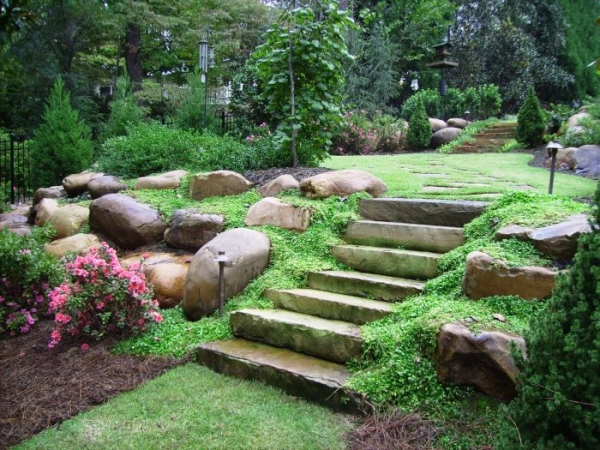Many yards come with a noticeable grade, and backyard steps help to create a safe, convenient path across that grade. Moving from an upper level patio to a lower grassy area or from a walkout deck to the grass, backyard steps come in a range of designs and materials.

Typical Stair Materials
Wood and stone are the two most common materials used. Wood stairs work best with wooden decks and to cover long stretches. Use this type of material when you want affordable, safe access to a door or raised living space. Readily available dimensional lumber comes together to create a set of solid steps in almost any length, with a railing attached where necessary.
Stone is a great choice for in-ground stairs, such as those built into a steep grade or used to access your patio. Contractors may install large, one-piece stone stairs or build a set using compacted soil and strategically placed stones and pavers.
Design Basics
Always design your steps for comfortable traffic flow, with the minimal rise (height of each stair) and run (depth of each tread) required by building code. You want to create a path that is safe and easy to travel, keeping in mind the needs of your own family now and in the future.
Install a landing to break up long flights of stairs, and to redirect a set of steps. Landings should be wide enough to accommodate the stairs, and large enough to allow people to make the turn, often at least 4-foot square.
Be sure the tread has some texture to avoid creating a slippery surface, and install railings for stairs taller than 3 rise. Very gradual steps with a wide tread may be safe without a railing, but be sure to check with local building code to ensure compliance.
With the right design and professional construction, backyard steps help to make your outdoor space useable. Take the time to design your steps well and these outdoor elements will add value to your property.

 781-646-5555
781-646-5555